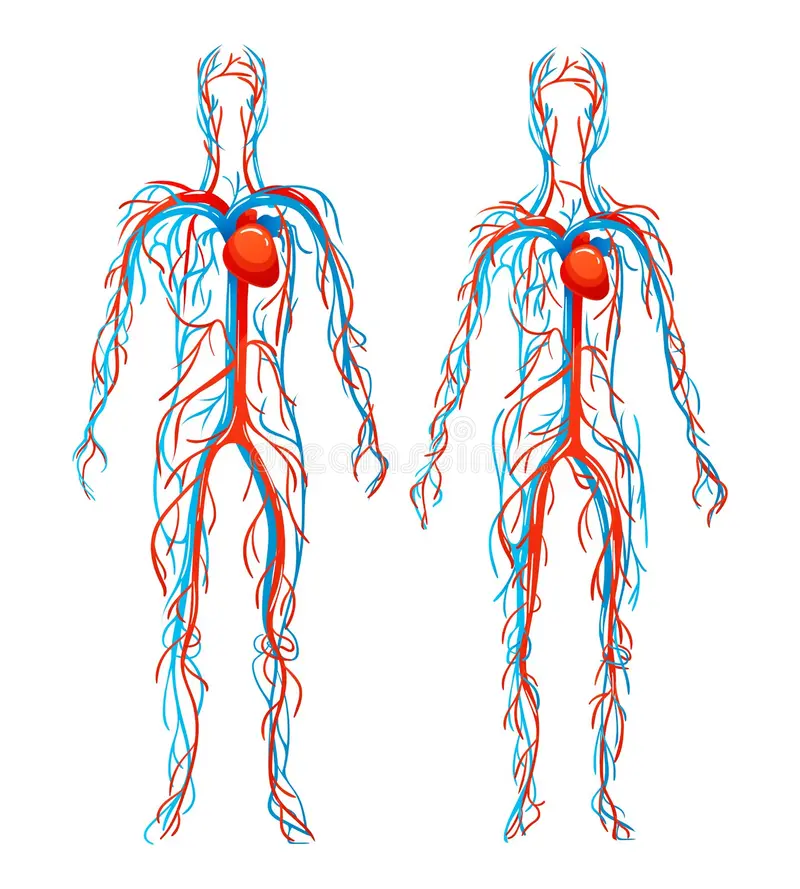Veins are blood vessels that carry blood toward the heart. Unlike arteries, which carry oxygen-rich blood away from the heart to the rest of the body, veins transport deoxygenated blood back to the heart.

Structure of Veins
Veins are composed of three layers:
- Tunica Intima: The innermost layer, consisting of a smooth endothelial lining that reduces friction as blood flows through.
- Tunica Media: The middle layer, made up of smooth muscle and elastic fibers. This layer is thinner in veins compared to arteries.
- Tunica Externa (Adventitia): The outermost layer, composed of connective tissue that provides strength and flexibility to the vein.
Types of Veins
- Superficial Veins: Located close to the surface of the skin, these veins are often visible and are responsible for draining blood from the skin and superficial tissues.
- Deep Veins: Found deeper within the body, these veins accompany arteries and are crucial for transporting a significant volume of blood back to the heart.
- Pulmonary Veins: These veins carry oxygenated blood from the lungs to the left atrium of the heart.
- Systemic Veins: These veins return deoxygenated blood from the rest of the body to the right atrium of the heart.
Function of Veins
- Blood Transport: Veins carry deoxygenated blood from tissues back to the heart, where it can be reoxygenated by the lungs. The only exception is the pulmonary veins, which carry oxygenated blood.
- Waste Removal: Veins help remove metabolic waste products from tissues, ensuring efficient waste management in the body.
Unique Features of Veins
- Valves: Many veins, especially those in the lower extremities, contain one-way valves that prevent the backflow of blood. These valves ensure that blood flows in the correct direction toward the heart.
- Compliance: Veins are more flexible and compliant compared to arteries, allowing them to store larger volumes of blood.
Common Vein-Related Conditions
- Varicose Veins: Enlarged, twisted veins that can be seen just under the surface of the skin, often in the legs. They can cause discomfort and cosmetic concerns.
- Deep Vein Thrombosis (DVT): A condition where a blood clot forms in a deep vein, usually in the leg. This can be serious if the clot travels to the lungs, causing a pulmonary embolism.
- Chronic Venous Insufficiency: A condition where the veins have difficulty returning blood to the heart, leading to symptoms like swelling, pain, and skin changes.
Maintaining Healthy Veins
- Stay Active: Regular physical activity improves blood circulation and helps prevent vein problems.
- Healthy Diet: Eating a balanced diet rich in fiber, fruits, vegetables, and lean proteins supports overall vascular health.
- Hydration: Drinking enough water helps maintain healthy blood viscosity and circulation.
- Avoid Prolonged Sitting or Standing: Take breaks to move around and stretch, especially during long periods of sitting or standing.
- Compression Stockings: Wearing compression stockings can help prevent and manage varicose veins and improve blood flow in the legs.
